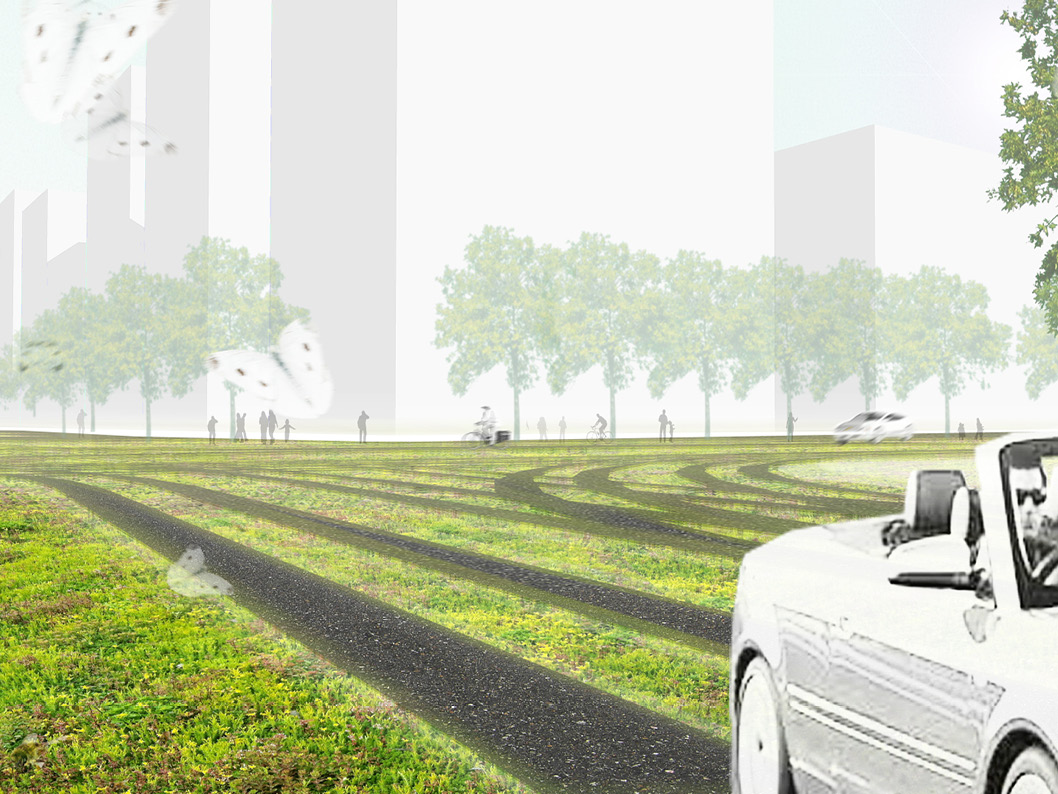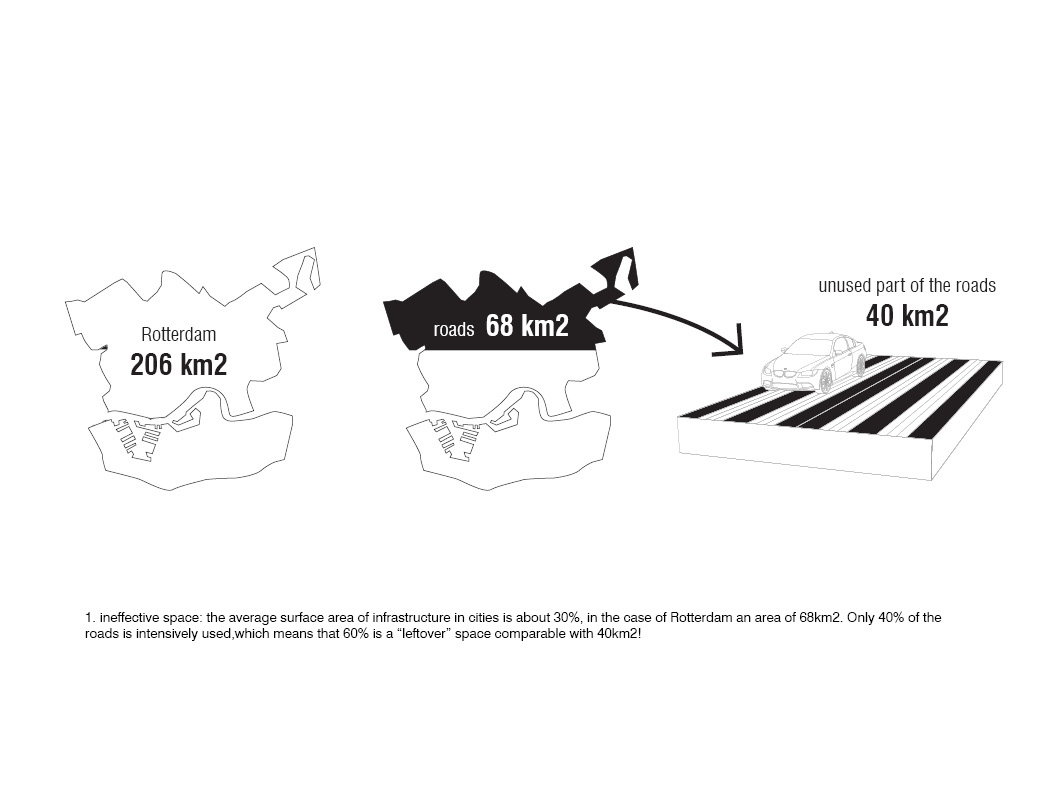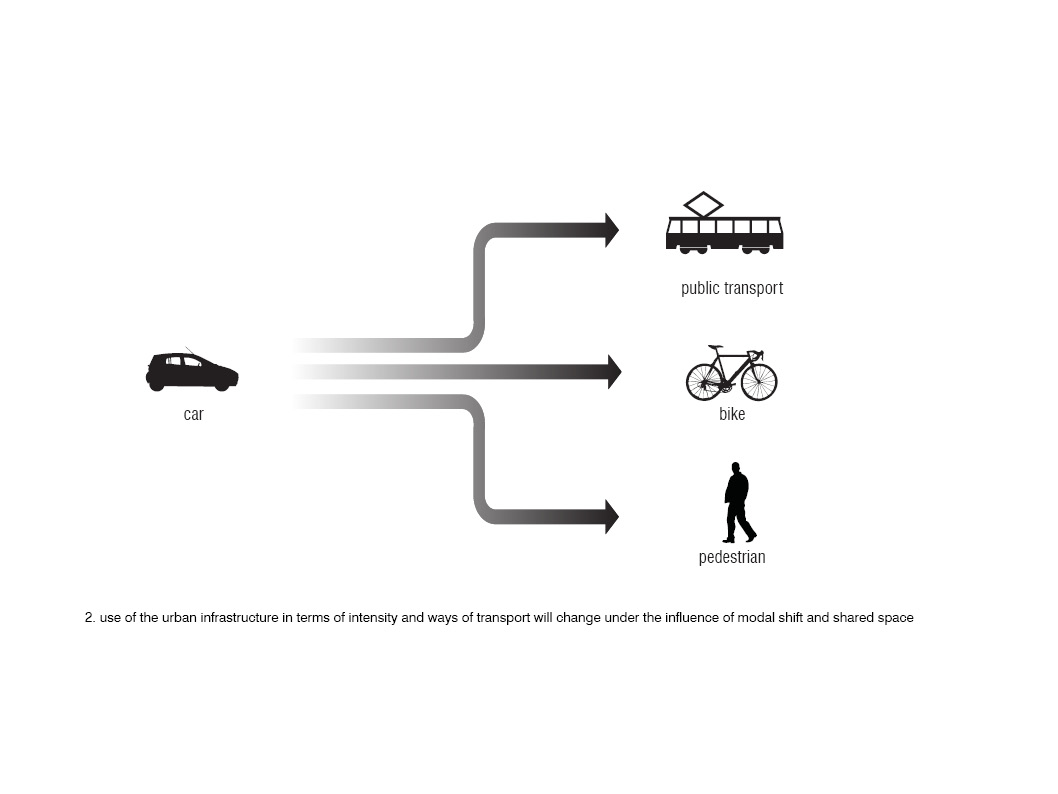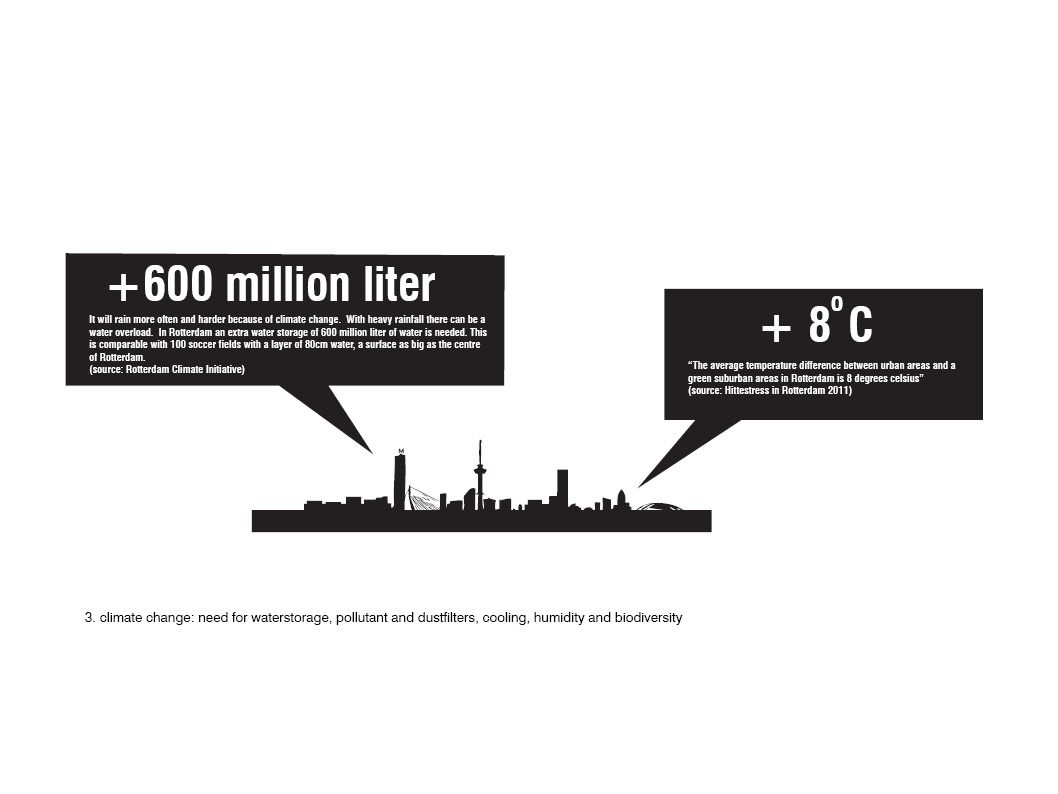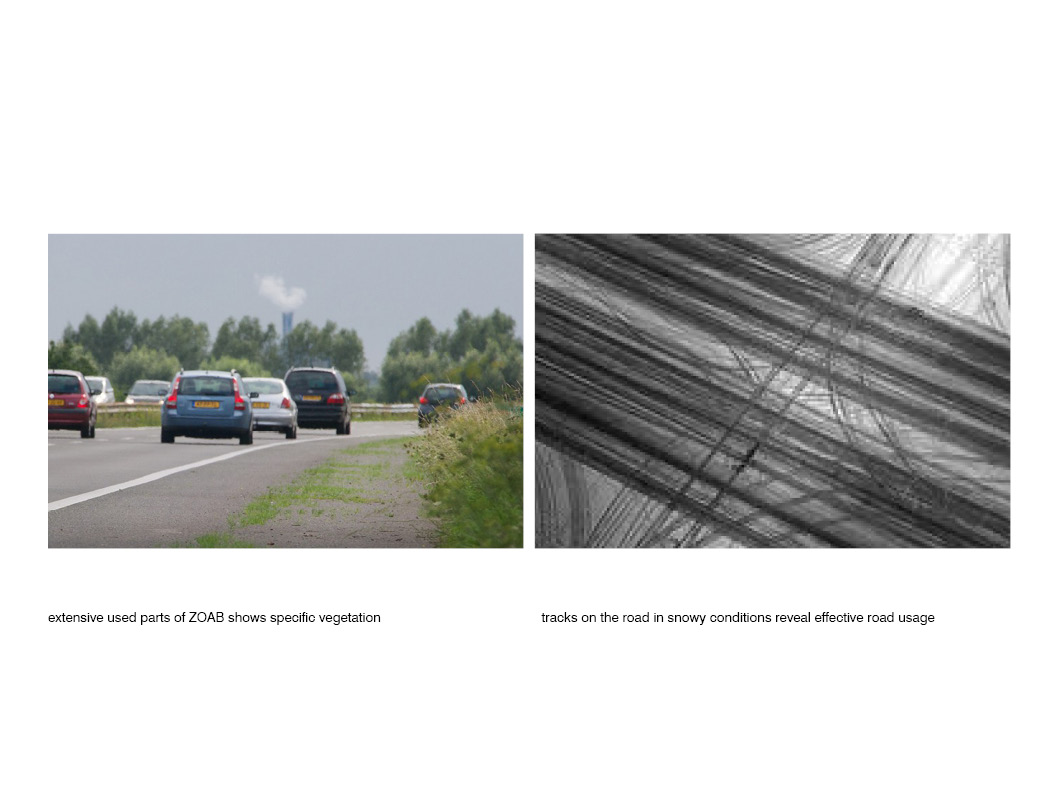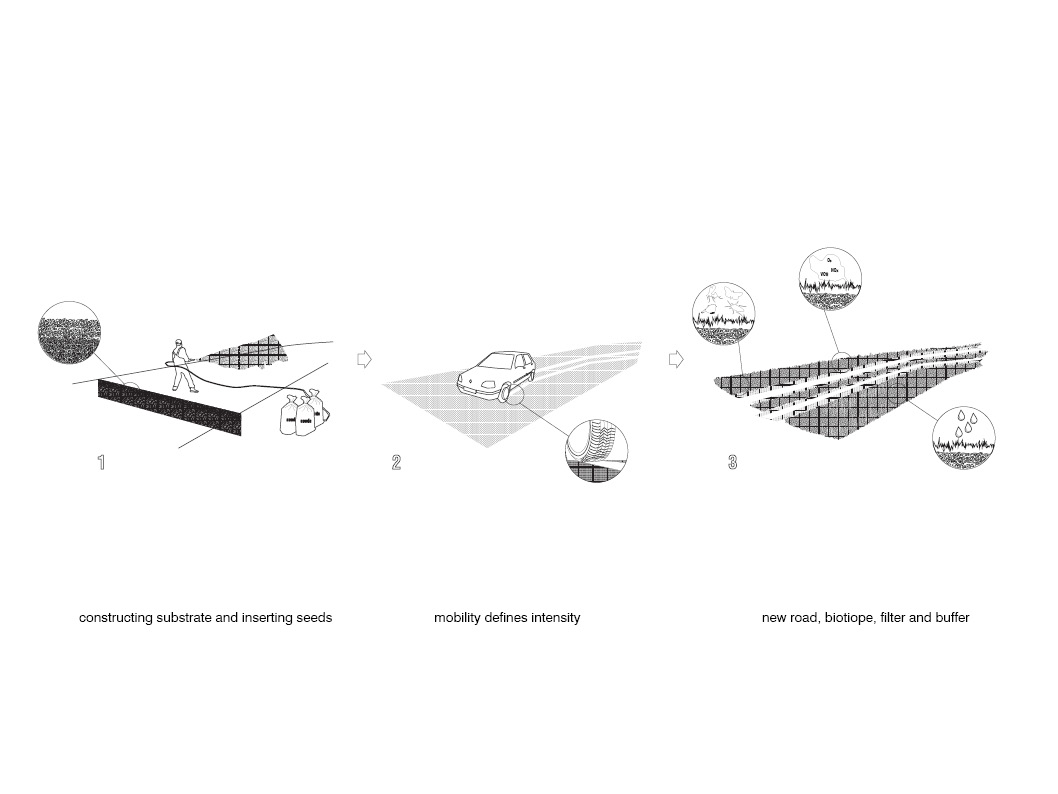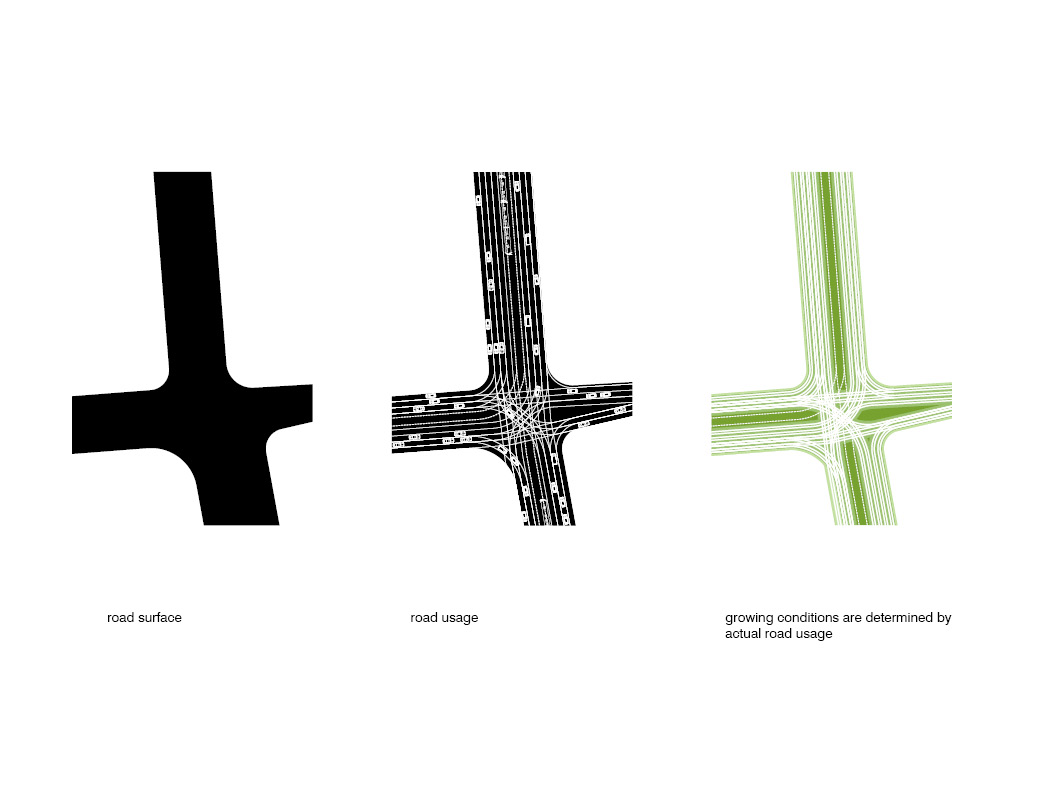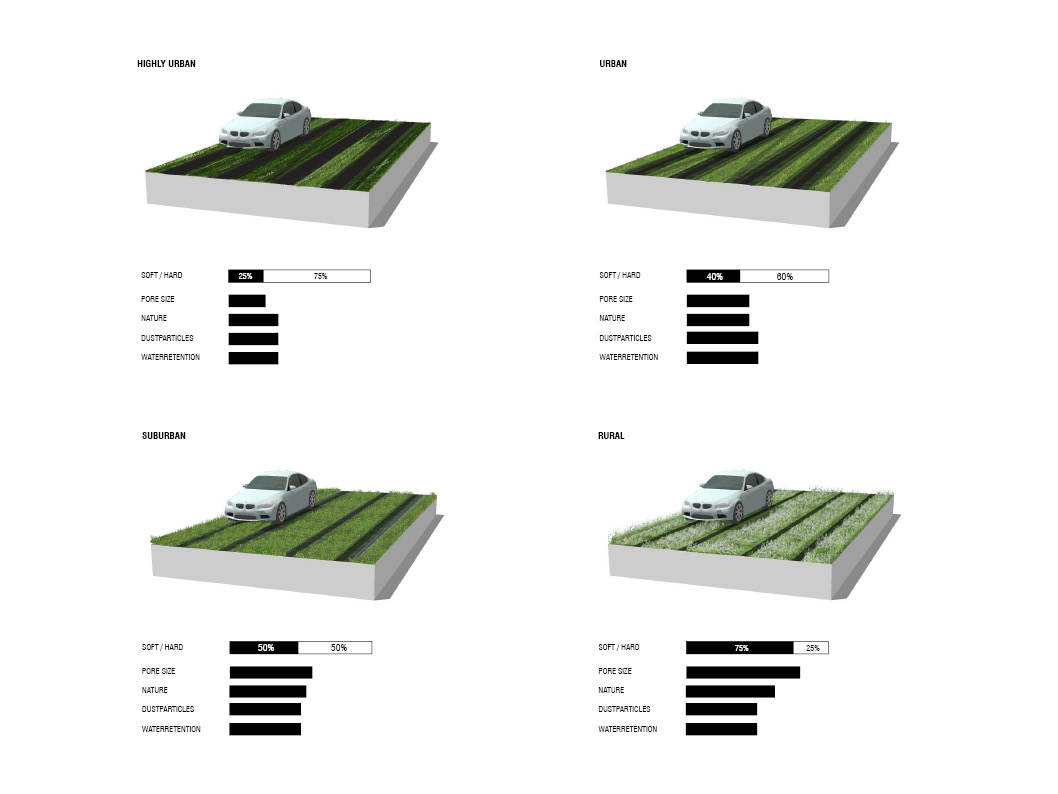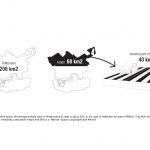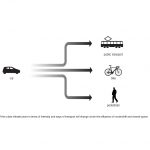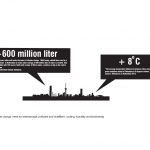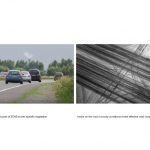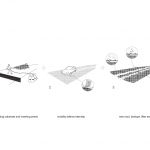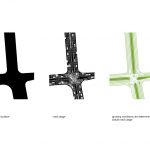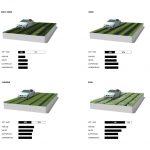Flowering Roads is a new and more effective way to use roads within the city fabric. It will increase the urban livability and biodiversity. Roads make up 30% of the surface of an average city, only 40% of this surface is used (tracks of the cars). This leaves 60% unused! The car will be a less dominant and sustainable way of transport within the cities and at the same time the city will have to cope with climate change; spaces to store water are needed and rising temperatures in the city will have a big impact on the residents.
Flowering Roads proposes to maximize the potential of the road surfaces within the city by expanding the possibilities for different use and flora and fauna. Intensity of use by traffic will determine the final conditions for species to grow. The construction material of this mobility field is based on the principle of the so called ZOAB: a granulate with a relatively open structure. Seeds of suited species can be added instantly comparable with the existing techniques for green roofs. These seeds will find suitable growing conditions in the holes and pores of this pavement. Intensively used parts will stay clean, unused parts will flourish.
Flowering networks in highly urban areas will have smaller pores because of intensive use, therefore species like moss, sedum and annuals will take advantage from these circumstances. Rural areas will give way to species like perennials. Perennials attract bees, butterflies and other insects which are essential for the pollination of plants.

